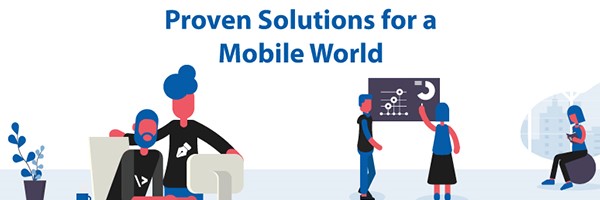Online Safety & Distance Learning
Parents have always been concerned for the safety of their children, but it seems prevalent now more than ever. Along with the standard parental concerns, it’s increasingly apparent that greater vigilance is needed to ensure children are obtaining the education they require. Online safety has always been a concern, but today’s landscape of remote learning calls for greater online safety measures and less distraction.
When the coronavirus pandemic shuttered schools around the nation, millions of children were left with nothing to do but play on their iPhones and scroll through Instagram and TikTok. Parents struggled to find ways to keep kids engaged over an extended summer vacation.
Now that school is back in session – although not in the manner to which most are accustomed – many districts have made the move to distance learning and now rely on competing digital technology platforms headlined by Zoom and Google Classroom.
It’s fantastic that communities and educators have come together to make distance learning a reality in such a short time – but it also means that school-age children will be online more than ever. This poses unique challenges for parents and compounds existing concerns regarding online safety and digital well-being.
Online Learning Statistics
The prevalence of distance learning at both elementary and secondary levels has exploded recently. As of September, nearly three-quarters of the largest districts in the United States had chosen an entirely online education model, a decision that impacts 8 million students. Undoubtedly, the number is much higher when smaller districts all over the country are factored in, meaning that 10s of millions of students must adapt to modes of online learning all while navigating the distractions and perils of the internet.
Internet safety isn’t the only challenge confronting both kids and parents this fall. With students spending an average of 500% more time online than they have in the past, screen time management is a hot topic as well. According to a recent survey we undertook, more than 71% of parents surveyed agreed that they feel helpless when it comes to limiting their children’s screen time during the COVID-19 pandemic. Perhaps more surprising, is that nearly the same number of parents (69%) agreed that online schooling has made them more concerned about their children’s internet safety than ever before.
Parental Challenges During COVID-19
Distance learning has many advantages. For instance, there isn’t as much shuffling of children to and from classes and extracurricular activities. It’s a form of respite from an otherwise hectic daily lifestyle and may alleviate some of the stress that children are already feeling in response to the pandemic and the pervasive impact it’s had on daily life.
Plus, many children in an online learning setting have the same resources or more than their traditional counterparts and still have access to their teachers. And Gallup reports that 28% of parents support full-time distance learning – up from just 7% at the onset of the pandemic.
However, there are concerns about distance learning at the same time. As of March 2020, 42% of parents were worried how the pandemic would affect the quality and continuity of their child’s education.
Advantages aside, there are still challenges posed by a completely virtual model of education such as:
- Learning outcomes – Will lack of access to learning resources hinder their child’s intellectual growth?
- Social development – Organic, peer-to-peer social interactions are vital to developing well-rounded social skills. Will distance learning put kids at a social disadvantage later in life?
- Technology Access – What if internet access is sporadic or non-existent? What if their child doesn’t have access to the hardware and tools necessary for distant learning?
- Internet safety – Of most concern to parents is, how will the huge increase in screen time paired with lack of in-person social interaction affect the safety of their children? Internet child safety risks abound these days.
Regardless of age or gender, children who have not had much internet exposure aren’t savvy to the sophistication of online predators. Keeping them safe and aware becomes of paramount concern to parents and other caregivers.
Internet Safety Concerns for Kids
Students across the nation more than likely have a bit of screen time under their belt. Regardless of how much time a child has had to learn proper online navigation the dangers posed remain the same. Parental control and network security applications can help address the most common online child safety concerns, such as:
- Predators
- System hacking
- Cyberbullying
- Sexual texting or messaging
- Inappropriate containing violence and/or adult themes
Internet Safety Tips for Parents
There are multiple ways parents can reduce online dangers. Some of the most important practices include:
- Actively participating in and being aware of school activities
- Establishing open dialog regarding online activities and related dangers
- Limiting or monitoring internet usage outside of school time hours
- Setting parental controls that minimize child exposure
All of this can be accomplished with the aid of parental control applications.
Online Safety for Kids
Parents are better able to manage their child’s safety online when they are armed with the tools do so. Further, it never hurts to offer gentle reminders and communications shared with consumers, such as never providing personal identifying information anywhere online, password protection methods, and never attempting to meet someone face-to-face whom they’ve only spoken to online. Parental controls tools and screen time management applications can become a solid ally in the fight for parents to achieve this.
Today’s challenge is not just about transitioning to online learning – it’s about keeping families safe every day.
Because of COVID-19, children around the nation are faced with unique educational challenges. Couple these hurdles with dramatic increases in the amount of time children spend in an online environment – for school and recreation – and there could be trouble brewing.
Technology is wonderful thing to have been given to us – but increased time online also increases the risks to children and the safety of families overall. Offering tools geared toward family safety is a win/win. With awareness of the challenges and a balanced approach, the whole family can reap the rewards of safe screen time and distance learning.




